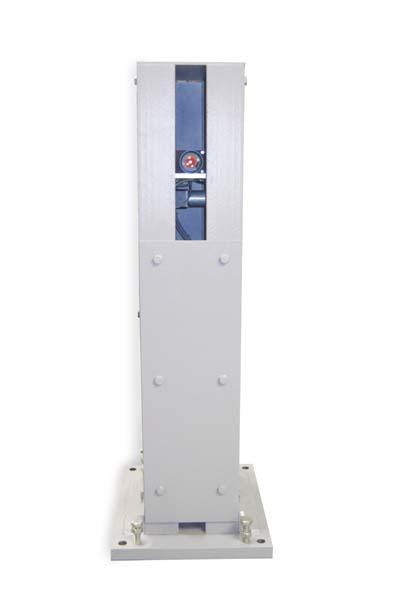
Behringer Saws has introduced a laser-based measuring system for use on the company's full range of sawing and turnkey pre- and post-cut material handling productivity-enhancing products. The new BSI Laser Length Measuring System helps customers save time and eliminate waste by confirming material dimensions to maximize material usage for more accurate and consistent cuts. Designed for use on Behringer sawing systems which have handling components to move materials into the work area, the BSI Laser Length Measuring System utilizes laser technology to first verify the length of the material to be processed. The mounted laser unit automatically detects the material and sends overall dimensions to an easy-to-read control panel. The operator can then move the material with powered roller conveyors to the correct length for cut off. Once in the correct position, the operator makes the cut and starts the cycle again. The BSI Laser Length Measuring System provides accurate measurements for confirmation of material size and increased throughput of finished goods. Once reset to zero, the readout on the operator's control will measure the length of the part being moved forward toward the laser via powered roller conveyors or some other type of conveyance system. When the part is at the correct length the operator now can close the vise system and begin the operation. The highly accurate laser system eliminates time-consuming manual measuring which often leads to deviations in production runs and wasted materials due to human error.
Contact Details
Related Glossary Terms
- sawing
sawing
Machining operation in which a powered machine, usually equipped with a blade having milled or ground teeth, is used to part material (cutoff) or give it a new shape (contour bandsawing, band machining). Four basic types of sawing operations are: hacksawing (power or manual operation in which the blade moves back and forth through the work, cutting on one of the strokes); cold or circular sawing (a rotating, circular, toothed blade parts the material much as a workshop table saw or radial-arm saw cuts wood); bandsawing (a flexible, toothed blade rides on wheels under tension and is guided through the work); and abrasive sawing (abrasive points attached to a fiber or metal backing part stock, could be considered a grinding operation).
